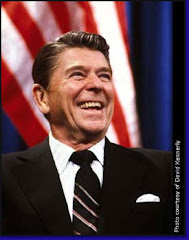Weekly Opinion Editorial
POTENTATE!
by Steve Fair
Since
January 20th, President Trump has signed 73 Executive Orders (EO)-
26 on his first day. That is more than
any recent president has signed in their first 100 days. Trump signed a total of 220 EOs in his first
term.
What is an
Executive Order? An EO is a directive by
the president issued to agents of the executive branch. An EO can have a binding force of law upon
federal agencies and do not require approval of Congress. They are however subject to judicial review
and interpretation. Every president
except William Henry Harrison has issued EOs.
Harrison was in office only 32 days when he died. The most famous EO was
Lincoln’s Emancipation Proclamation, which granted freedom to slaves. Franklin Roosevelt signed the most EOs. For years the Heritage Foundation have
accused presidents of abusing EOs by using them to make law with congressional
approval and moving existing laws away from their original intent. Three observations:
First, the
U.S. president is not a king. The founders
refrained from making the Presidency into the image of the British monarchy,
which they had just gained independence from. Instead, they created an
executive who had to be both responsive and accountable to the citizenry and
balanced against the other two branches of government. While the president has broad authority, they
are not a sovereign dictator.
The
founders debated for three weeks on what to call the nation’s chief
executive. Some wanted to call George Washington
the Chief Magistrate. Some preferred
King. One proposal for the title was
Protector of the Liberties of the People of the USA. The
Senate thought president was a title that wouldn’t be taken serious by other
countries, but ultimately agreed. Today,
the President of the United States is the most powerful position in the
world.
Recently, main
stream media and certain of those who oppose Trump and his policies are claiming
his use of EOs has made him a dictator/monarch. Republican elected officials are encountering
hostile constituents at Town Hall meetings, which is nothing new. CNN released a poll showing 52% of Americans
disapprove of Trump’s first month in office.
Liberals are always attempting to gaslight Americans, so take most of
what you hear and see in the media with a grain of salt. Trump’s policies will likely work if given
time.
Second, EOs are overused. Executive Orders have increased as years went
by. EOs were meant to be issued within
the narrow confines of Article II of the Constitution. That changed with President Teddy Roosevelt,
a Republican. He signed 1,100 EOs,
almost as many as the previous 100 years combined. 21st century presidents have issued
EOs with more frequency because the country is polarized and getting laws
passed is next to impossible. That is
because negotiation, deal making, compromise, accommodation, and collaboration
have become dirty words in politics. Working
across the aisle for the betterment of the masses has become nonexistent. Elected officials come home and boast to constituents
of accomplishing nothing by standing up to the other side. The result is gridlock and more EOs by the
executive branch.
Third, the
use of EOs makes consistency impossible.
President Biden opens the border with an EO- Trump closes it. When Biden entered office, he rescinded a
record 42 of Trump’s EOs in his first 100 days.
Trump flipped them back when he was re-elected. Both justify the action because Congress is dysfunctional
and the only way something gets done is by EO.
The framers of the Constitution did not consecrate power in one office. They set up a democratic representative form of government that gave the real power to the people. If voters will hold federal elected officials accountable by calling out grandstanding and showboating by do nothings, EOs will not be as prevalent. If EOs continue to be the law of the land, then perhaps the title of president be changed to potentate.






